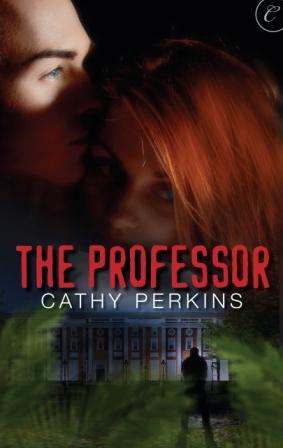
by Jodie Renner
Until fairly recently, most readers were more familiar with mysteries than thrillers. Mysteries of all sorts (cozy, hardboiled, suspenseful, etc.) are still going strong, but thrillers make up more and more of the bestsellers these days. How exactly do thrillers differ from mysteries, anyway? Both are fiction stories involving criminal activity, catching the bad guy(s), and at least one murder.
The main difference seems to be in the delivery—how they are told. Mysteries are usually more cerebral, for readers who enjoy solving puzzles, whereas thrillers appeal more to the emotions and a yearning for excitement, a desire to vicariously confront danger and defeat nasty villains. A mystery, especially a “cozy” one, can unfold in a leisurely fashion, but thrillers need to be much more fast-paced and suspenseful.
David Morrell, author of 28 thrillers, explored the difference between mysteries and thrillers several years ago. His detailed description included this: “Traditional mysteries appeal primarily to the mind and emphasize the logical solution to a puzzle. In contrast, thrillers strive for heightened emotions and emphasize the sensations of what might be called an obstacle race and a scavenger hunt.” (David Morrell,
www.crimespreemag.com)
James N. Frey, author of
HOW TO WRITE A DAMN GOOD THRILLER and
HOW TO WRITE A DAMN GOOD MYSTERY, among other “damn good” books on writing, says, “In the United States, mysteries are not considered to be thrillers, though they share some common elements.” Frey describes the differences like this:
“In a mystery, the hero has a mission to find a killer.
In a thriller, the hero has a mission to foil evil.”
Frey goes on to elaborate, “a thriller is a story of a hero who has a mission to foil evil. Not just a hero—a
clever hero. Not just a mission—an ‘impossible’ mission. An ‘impossible’ mission that will put our hero into terrible trouble.”
According to
International Thriller Writers, a thriller is characterized by “the sudden rush of emotions, the excitement, sense of suspense, apprehension, and exhilaration that drive the narrative, sometimes subtly with peaks and lulls, sometimes at a constant, breakneck pace.”
ITW defines thrillers as a genre in which “tough, resourceful, but essentially ordinary heroes are pitted against villains determined to destroy them, their country, or the stability of the free world.”
Part of the allure of thrillers, they say, comes from not only what their stories are about, but also how they are told. “High stakes, nonstop action plot twists that both surprise and excite, settings that are both vibrant and exotic, and an intense pace that never lets up until the adrenaline-packed climax.” (Source: James N. Frey,
HOW to WRITE A DAMN GOOD THRILLER)
I asked some friends, clients and colleagues what they thought the main differences were between these two genres. According to thriller writer and friend
Allan Leverone, “The definition I like best is this: In a mystery, the crime has already been committed, but the hero and the reader must figure out by whom. In a thriller, the crime (at least the biggie) hasn't been committed yet, but the reader knows who the bad guy is; the question is whether he can be stopped.”
Mystery and romance writer
Terry Odell says, “The best definition I’ve heard is that in a mystery, you're one step behind the detective, since you don't know anything until he does. In suspense, you're one step ahead, because you know things that the detective [or hero] can't know.” This is especially true when we get into the viewpoint of the villain.
My friend, suspense-mystery and thriller writer,
LJ Sellers, tells me she recently read that in a thriller, the villain drives the story, versus mystery, in which the protagonist drives the story. Good one!
And finally, another good friend and colleague, thriller and horror writer
Andrew E. Kaufman says, “Here's a less conservative, completely off-color definition, coming from a less conservative, completely off-color mind: A thriller is like mystery on Viagra. Everything's more amped up, fast-paced, and frenetic. A good thriller should keep your heart racing, your fingers swiping at the pages, and your rear on the edge of its seat. Of course, those lines can be blurred. Many authors straddle the fence between the two. Nothing is in black and white, and gray is a beautiful color.”
I used to read a lot of mysteries, and still do from time to time, but in the last few years I much prefer the pure escapism and “pulse-pounding suspense” of thrillers. Who are your favorite thriller writers? My top three would probably be best-selling authors
Lee Child, Sandra Brown and
Robert Crais, but I love and read so many more.
How about your favorite thriller characters? For popular series, I especially like
Jack Reacher, Joe Pike, Elvis Cole,
Myron Bolitar and Janet Evanovich’s Stephanie Plum—and the two hunks in her life!
Then there are the fast-paced mysteries that seem to straddle both genres. For suspense-mysteries, I love LJ Sellers' page-turning Detective Jackson series. And maybe I should put
Harlan Coben’s Myron Bolitar stories and Robert Crais’s Joe Pike and Elvis Cole stories into the hybrid category of suspense-mysteries, too. What do you think? Are there any other novels you like that have elements of both?
Copyright © Jodie Renner, January 2012
 Jodie Renner is a freelance editor specializing in thrillers, romantic suspense, mysteries, and other crime fiction, as well as YA. Check out her website at www.JodieRennerEditing.com.
Jodie Renner is a freelance editor specializing in thrillers, romantic suspense, mysteries, and other crime fiction, as well as YA. Check out her website at www.JodieRennerEditing.com.








